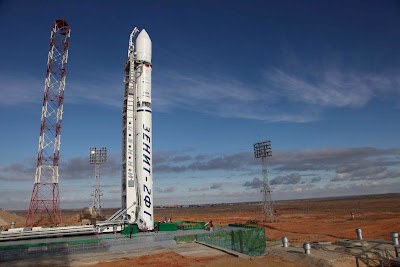Earlier today, Republican presidential hopeful Herman Cain gave a
speech to a group of Young Republicans in which he complained about President Obama's decision to end the Space Shuttle program. Wait, what!? Let's be absolutely clear, here -
George W. Bush ended the Space Shuttle program. I don't know if that is a simple misunderstanding of facts, or if Cain is trying to re-write history - either way it doesn't impress me.
The Space Shuttle Discovery in low Earth orbit (NASA).
However, the real issue here isn't who canceled the shuttle program. The real issue is that people are still up in arms over it. And it isn't just Herman Cain that's whining. Just last month, Gene Cernan, the last man to walk on the Moon,
testified before Congress that we should take the Space Shuttle out of retirement. With all due respect to Mr. Cernan, that's completely impractical, and would be a giant step backward from the direction NASA is headed.
Don't get me wrong, the Space Shuttle is an amazing machine. If I had my way, we'd have a fleet of ten space shuttles, an orbiting Moon station, and permanent mining colonies on Mars. Unfortunately, there aren't unlimited government funds for space exploration, and I think that's where some people get confused. In order for NASA to begin human exploration of the solar system beyond Earth and the Moon, other manned programs had to be cut. In 2005, 30% of NASA's budget, 5 billion dollars, was
spent on the Space Shuttle. The Space Launch System and the Orion capsule, NASA's planned rocket and vehicle to take humans into deep space, will
cost between $3 and $4 billion per year for the next 6 years, and probably continue at that rate for the life of the program. So, there's the problem. Unless Congress and the American people are willing to spend an
extra $4 billion per year on NASA's manned operations, there is no way that both the Space Shuttle and a deep space exploration program could both survive.
It's a question of where NASA should focus its limited resources. And the solution that NASA and the government came up with is a good one. Cancel the shuttle and let NASA focus on putting men on asteroids and Mars, and let commercial entities pick up the burden of ferrying astronauts to low Earth orbit. It's true there will be a gap of several years in American made manned spacecraft. It's also true that none of the spacecraft currently in the pipeline will have the massive external cargo bay that the shuttle had. However, companies like
Boeing,
SpaceX, and
Orbital Sciences are showing real promise in realizing commercial spacecraft, both for cargo and astronauts.
Artist's depiction of SpaceX's Dragon capsule (Getty).
The Space Shuttle was the right spacecraft at the right time. It isn't the only spacecraft for all time. For American spaceflight to move forward, we need to stop looking backward and we need to stop the complaining. SLS is the rocket of the future. Orion is the vehicle that will take humans to an asteroid. SpaceX's Dragon capsule will be ferrying cargo and people to the International Space Station. Get used to it.










